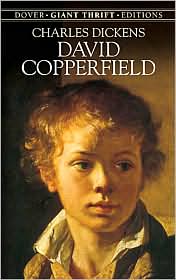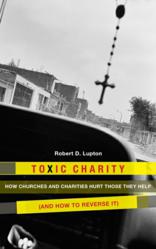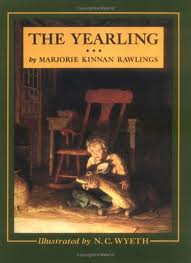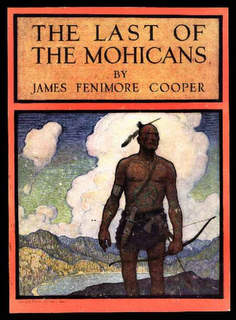|
Interesting
Reading for 2013
Charles Dickens -
David Copperfield (1850)
|

|
Charles Dickens’s most famous novel was also his own favorite, and the one that drew most on his own life story.
David Copperfield is the classic account of a boy growing up in a world that is by turns magical, fearful, and grimly realistic. In a book that is part fairy tale and part thinly veiled autobiography, Dickens transmutes his experiences into a brilliant series of comic and sentimental adventures in the spirit of the great eighteenth-century novelists he so much admired. Few readers can fail to be touched by David’s fate, and fewer still to be delighted by his story.
Dickens' most autobiographical novel,
David Copperfield boasts a wealth of adventure and suspense as well as an unparalleled gallery of the author's most memorable characters including Mr. Murdstone, David Copperfield's evil guardian and owner of the wine-bottling factory where David makes his living under appalling conditions, the snake-like Uriah Heap whose vanity leads him to cruelty, Mr. Micawber, one of literature's funniest characters, and the kind, generous Peggottys, representing all that is good even in the face of adversity.
|
Robert D. Lupton
- Toxic Charity (2011)
 |
Public service is a way of life for Americans; giving is a part of our national character. But compassionate instincts and generous spirits aren’t enough, says veteran urban activist Robert D. Lupton. In this groundbreaking guide, he reveals the disturbing truth about charity: all too much of it has become toxic, devastating to the very people it’s meant to help.
In his four decades of urban ministry, Lupton has experienced firsthand how our good intentions can have unintended, dire consequences. Our free food and clothing distribution encourages ever-growing handout lines, diminishing the dignity of the poor while increasing their dependency. We converge on inner-city neighborhoods to plant flowers and pick up trash, battering the pride of residents who have the capacity (and responsibility) to beautify their own environment. We fly off on mission trips to poverty-stricken villages, hearts full of pity and suitcases bulging with giveaways—trips that one Nicaraguan leader describes as effective only in “turning my people into beggars.” |
In Toxic Charity, Lupton urges individuals, churches, and organizations to step away from these spontaneous, often destructive acts of compassion toward thoughtful paths to community development. He delivers proven strategies for moving from toxic charity to transformative charity.
Marjorie Kinnan
Rawlings - The Yearling (1938)
 |
In this classic
story of the Baxter family of inland Florida and their wild, hard,
satisfying life, Marjorie Kinnan Rawlings has written one of the
great novels of our times. A rich and varied story - tender in its
understanding of boyhood, crowded with the excitement of the
backwoods hunt, with vivid descriptions of the primitive,
beautiful hammock country, with humor and earthy philosophy - The
Yearling is a novel for readers of all tastes and ages.
Its glowing picture of life that is far and refreshingly removed
from modern patterns of living becomes universal in its revelation
of simple courageous people and the abiding beliefs they live by.
Winner of Pulitzer Prize in 1938, The
Yearling was made available the following year in a
special edition illustrated by the distinguished American artist,
N.C. Wyeth. |
James Fenimore
Cooper - The Last of the Mohicans (1826)
 |
The Last of the Mohicans is the second novel in Cooper's Leatherstocking series. It is the sequel to the now less-famous The Pioneers and the prequel to The Prairie. It is
set in the 1750s during the French and Indian
War between France and England in North America and, as the novel begins, we are already three years into the conflict. At Fort Edward, General Webb receives news
that a French attack under Montcalm is coming to Fort William Henry which is only guarded by the small force of the Scotsman
Monro. Captain Duncan Heyward is dispatched to take Munro’s daughters,
Cora Munro and her younger sister Alice, to that Fort along with the renegade Native American runner
Magua, known as Le Renard Subtil (The Cunning Fox). We follow their journey as they meet the magnificent Mohican scout Chingachgook whose son Uncas is the last of the Mohican tribe, and find that Magua is actually preventing their progress and is allied to the French. |
We meet the character Hawkeye (Natty
Bumppo, the European-born adopted son of Chingachgook
and central character in the ‘Leatherstocking Tales’ ) and follow him and his Indian companions as they become involved in the bloody war. Hawkeye is seemingly the last decent white man as he respects the Indians’ customs in this exciting adventure story full of battles, captures and
rescues.
Throughout
The Last of the Mohicans, Cooper presents “the toils and dangers of the wilderness” as a force much greater than man. Cooper’s detailed descriptions of the wilderness permeate the novel creating a picturesque landscape. Nature plays a much more important role than merely providing a background setting. The way in which nature impacts the characters suggests that the role of nature is central to the novel. There is a marked difference in the way the various characters experience nature; the Mohicans and Hawkeye are aware of their surroundings and act in harmony with nature, while their English companions could not be more awkward and destructive.
|



